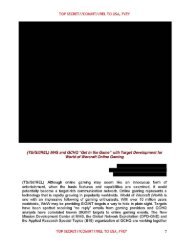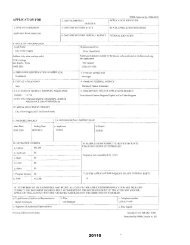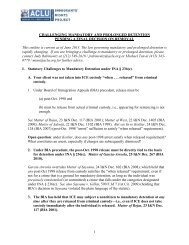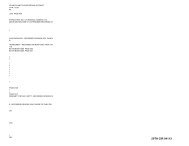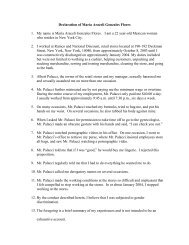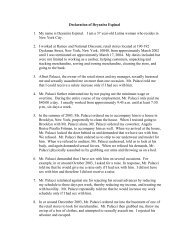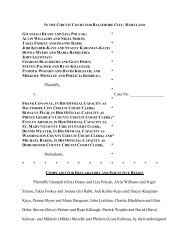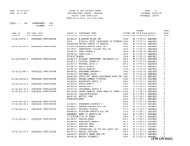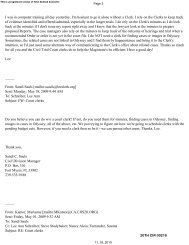NO. AP-75,363 IN THE COURT OF CRIMINAL APPEALS OF TEXAS ...
NO. AP-75,363 IN THE COURT OF CRIMINAL APPEALS OF TEXAS ...
NO. AP-75,363 IN THE COURT OF CRIMINAL APPEALS OF TEXAS ...
Create successful ePaper yourself
Turn your PDF publications into a flip-book with our unique Google optimized e-Paper software.
was consistent and detailed. 5<br />
6<br />
Garner explained that as he was bowling on lanes 25 and 26, a single assailant<br />
gained entry to the closed and locked bowling alley by convincing assistant manager<br />
Stephen Sims that he needed water (or air) to remedy a problem with his automobile. (32<br />
RR 66, 71-74, <strong>75</strong>, 79-80, 83, 101, 104, 136-38, 144). The assailant carried a pitcher for<br />
7<br />
the water. (32 RR 72-74, 79-80, 83, 104-06). Sims then went outside with the assailant.<br />
(32 RR 73, 80, 104, 137, 139, 145). The assailant reentered the bowling alley with Sims,<br />
brandished a gun, made the victims lie on the floor, and obtained money by ordering Sims<br />
to open a cash register. (32 RR 69, 80, 84, 106-07, 112, 124, 126-27).<br />
Garner lay between Tommy Temple and Steve Sims, with Temple to his right. Ms.<br />
8<br />
Felsher was next to Sims. (32 RR 109). In a semi-circle, the order of the victims from the<br />
135, 147; 32 RR 207-19). Subsequent footnotes in this section cite repeated instances where other witnesses and<br />
evidence corroborated Garner’s recollection of events.<br />
5<br />
One exception occurred during Garner’s initial interview at the hospital when, perhaps due to difficulties with his<br />
language, Garner responded “yeah,” when the police asked whether his assailant was a black man, and said that his<br />
assailant was close to his own height, twenty “foot” [sic] tall. (32 RR 63-64). Garner would later say that the lone<br />
perpetrator was white and over six feet tall. (32 RR 83, 131-32).<br />
6<br />
The police later corroborated this aspect of Garner’s statement when they recovered Garner’s rings between these<br />
lanes. (26 RR 84-85; 32 RR 47-49).<br />
7<br />
Photographs taken by crime scene investigators confirmed the presence of a water jug on the control booth counter<br />
near the entrance. (27 RR 90; 43 RR State Exhibit 39). In his trial testimony, Garner confirmed that employees<br />
never kept a water jug on the control booth. (28 RR 189). Manager Jim Peters testified that he did not know why<br />
that jug would be there. (26 RR 184).<br />
8<br />
The forensic evidence was completely consistent with Garner’s description. The bullet wounding Garner passed<br />
through his head. (28 RR 110-11). The location of a bullet hole found in the carpet corroborated Garner’s<br />
description of where his head was on the floor when he was shot. (31 RR 154-55 (testimony of Detective Kenny<br />
Williamson); 33 RR 87-88 (testimony of defense crime-scene expert)). A police photograph of this location does<br />
not include Garner himself because he had been removed for medical treatment, but it depicts the victims in a<br />
semi-circle in the positions Garner had described. Compare (43 RR State's Exhibit 5) with (45 RR Joint Exhibit 3).<br />
The position of the bodies when the police and other witnesses arrived, however, was different from Garner’s<br />
description of where he was when shot because, unbeknownst to the police at the scene, Garner had changed<br />
positions on the floor after the shooting. Thus, when witnesses arrived, they saw the two injured victims (Garner<br />
and then Felsher) nearest the door. (26 RR 105-07).<br />
2



